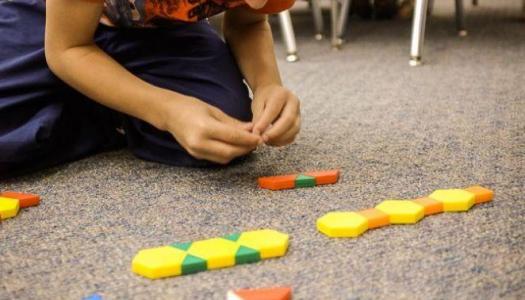Four Ways to Learn from Our Mistakes
Join Our Community
Access this resource now. Get up to three resources every month for free.
Choose from thousands of articles, lessons, guides, videos, and printables.

Saying we should learn from our mistakes is common among parents and teachers alike. Though a powerful life skill, it can be tricky to teach. In Visible Learning for Literacy, Grades K–12: Implementing the Practices That Work Best to Accelerate Student Learning Fisher, Frey, and Hattie write about the frustration of striving toward something only to fall short time and again. They say, “Small failures are a part of the learning process and can actually lead to a more attenuated understanding of why something didn’t work the first time, so as not to repeat it again.” (Fisher, Frey, & Hattie, 2016, p. 100 )
Recently I watched Jordan, a fourth grader, as he attempted to solve a math problem he had missed on the end-of-unit test. After multiple attempts and making the same mistake each time, his frustration grew because he "just didn’t get it." Given the situation, I didn't think this was the time to ask him what he could learn from his mistakes. How do we help students in this situation?
Eduardo Briceño recently published an article called "Why Understanding These Four Types of Mistakes Can Help Us Learn." In this article, he reminds us that mistakes are desirable, which we want to communicate to our students. Doing so will help them overcome the fear of making mistakes, and most importantly, how to learn from them.
Briceño identifies four types of mistakes:
- Stretch Mistakes
- Aha-Moment Mistakes
- Sloppy Mistakes
- High-Stakes Mistakes
While talking with Jordan about the problem he was attempting to solve, I wrote down the four different mistakes and asked him if he knew the type of mistake he was making. Interestingly enough, even though Jordan had never been taught about these different labels, he identified his type of mistake as a Stretch Mistake.
Based on the information in the article, we talked about what it might mean when someone gets stuck when stretching themselves and what he could learn from this type of mistake that might help him avoid it in the future. Since Jordan approached the problem the same way each time, attempting to solve it in the exact same way and receiving the same outcome, he set a goal to continue to stretch himself to try new things and when stuck to make another attempt with a different approach.
I felt joyful as I watched Jordan move from frustration to having a strategy to attempt the problem again, and to being unafraid to try something that stretched his thinking.






